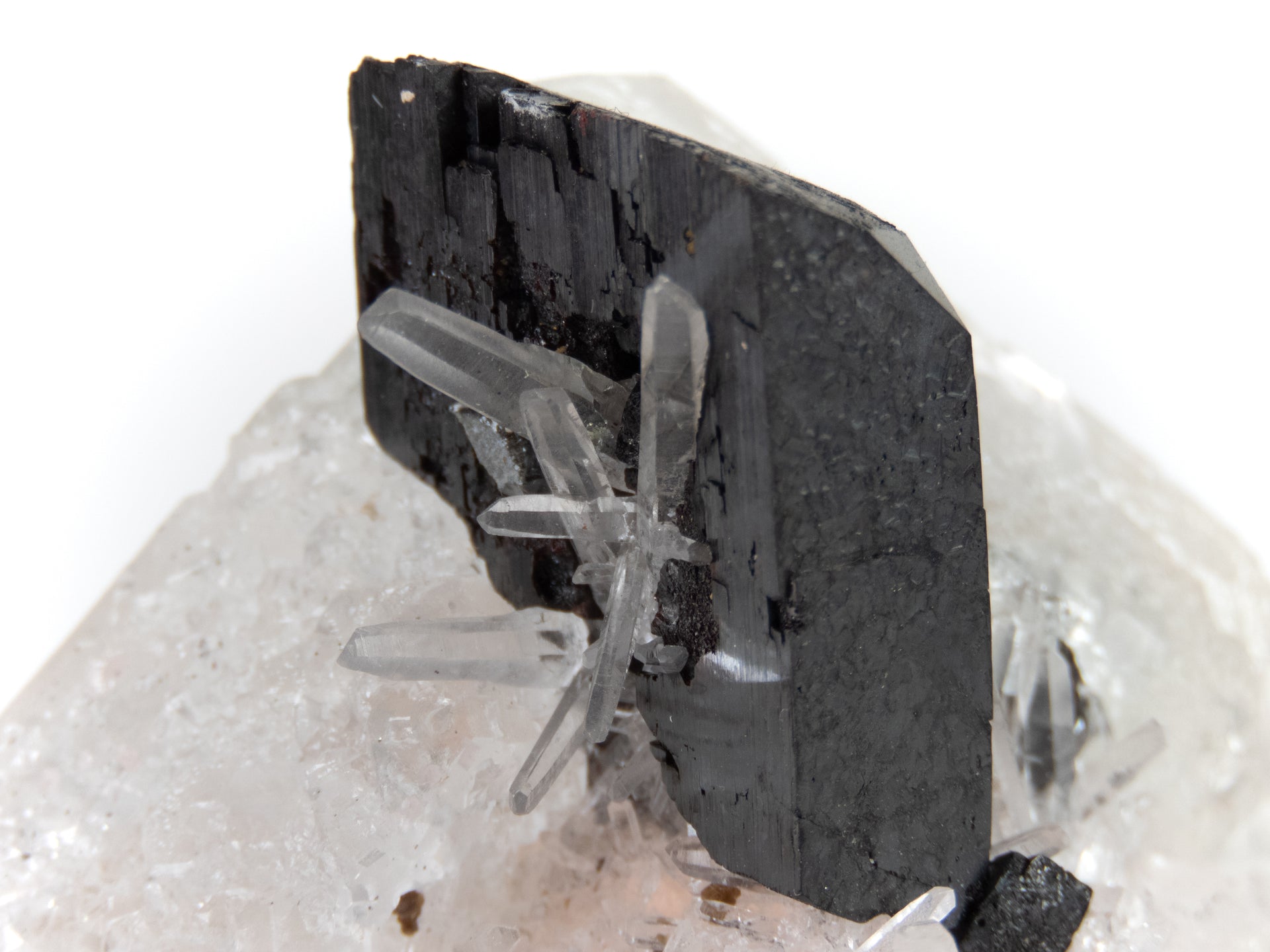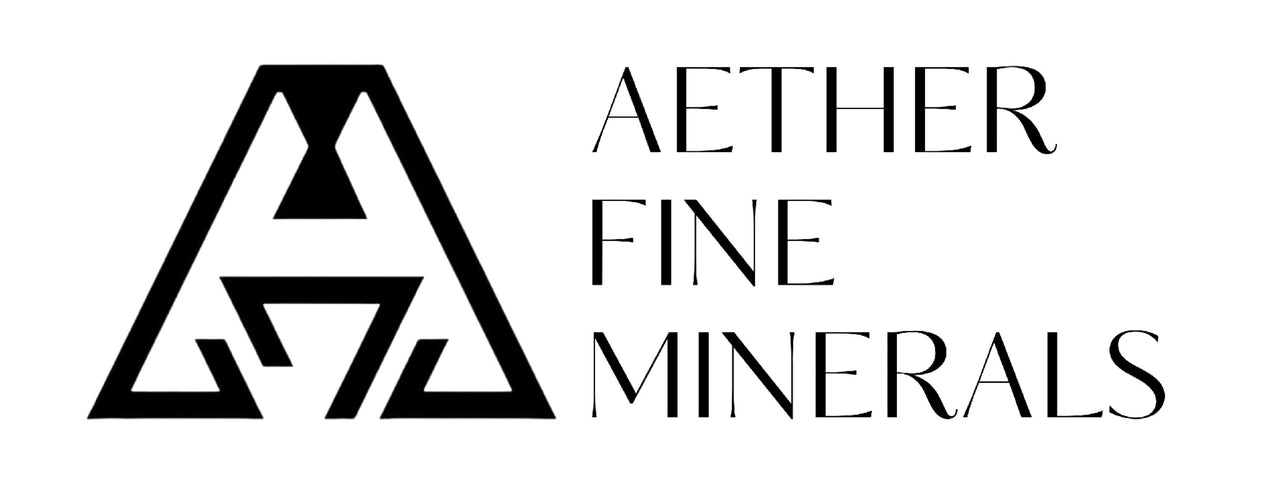
What's a Crystal? Introduction to Formation, Structure, and Systems
Crystals are nature's geometric marvels, but how do they come to be? The process begins with a solution or molten material that contains the building blocks of the crystal. As this mixture cools or the liquid evaporates, these building blocks (atoms, ions, or molecules) start to come together.
The key to crystal formation is organization. Unlike in liquids or gases, where particles move about randomly, in crystals, particles arrange themselves in a repeating, orderly pattern. This process starts with a tiny "seed" - a small cluster of particles that have found each other and bonded in the right way. Once this seed forms, other particles in the solution are attracted to it and attach themselves in the same pattern.
As more and more particles join in, following the established pattern, the crystal grows larger. The specific shape of the crystal depends on factors like temperature, pressure, and the chemical composition of the solution. This is why crystals of the same mineral can sometimes look different - they've grown under different conditions!
The rate of crystal growth can vary widely. Some crystals, like salt, can form relatively quickly - you might even be able to grow them at home in a matter of days. Others, like large quartz crystals or diamonds, can take thousands or even millions of years to form in nature. The size of the final crystal depends on how long the growth process continues and how much material is available.
Interestingly, the environment in which a crystal grows can also affect its appearance. For example, if a crystal grows quickly, it might trap impurities or develop irregularities. On the other hand, slow, undisturbed growth often results in larger, clearer crystals. This is why some of the most prized gemstones are those that have grown slowly in ideal conditions over long periods.
Crystal Structure Basics
When we look at a crystal, we're seeing the result of countless tiny building blocks stacked together in a specific way. This internal arrangement is what we call the crystal structure. Imagine building a wall with identical bricks - the way you stack those bricks determines the overall shape and properties of the wall. It's the same with crystals, but on a much smaller scale!
The basic unit of a crystal structure is called the unit cell. This is the smallest group of particles that, when repeated over and over, creates the entire crystal. Think of it as the crystal's "blueprint." The unit cell contains all the information needed to understand how the whole crystal is put together.

Pyrite cubes from the Ampliación a Victoria Mine in Spain, showing how symmetrically crystals in the cubic crystal system can form.
Crystal structures can vary widely. Some are simple, with just a few particles in each unit cell. Others are complex, with dozens or even hundreds of particles arranged in intricate patterns. These different arrangements give crystals their unique properties, affecting everything from their hardness and melting point to how they interact with light.
The arrangement of atoms in a crystal structure is not random. It follows specific rules based on the chemical bonds between the atoms and the overall energy of the system. The goal is always to achieve the lowest energy state possible, which usually means packing the atoms as efficiently as possible while maintaining proper chemical bonding.
This ordered arrangement of atoms gives crystals some of their most distinctive properties. For example, the way atoms are arranged determines how easily a crystal can be split or cleaved. It also affects the crystal's optical properties, such as how it refracts light or displays pleochroism (different colors when viewed from different angles).
Introduction to Bravais Lattices
Now, let's dive into a concept that helps us understand and classify crystal structures: Bravais lattices. Don't let the fancy name intimidate you - a Bravais lattice is simply a way of describing how the points in a crystal structure are arranged.
Imagine a 3D grid of dots, where each dot represents the location of an atom or molecule in the crystal. A Bravais lattice is a mathematical description of this grid. It tells us how the dots are spaced and aligned relative to each other.
Surprisingly, despite the vast variety of crystals in nature, there are only 14 unique Bravais lattices. These 14 patterns cover all the possible ways that crystal structures can be arranged in three-dimensional space. From the simple cubic lattice (think of a stack of cubes) to more complex arrangements like the face-centered cubic or hexagonal close-packed, these lattices form the backbone of crystal structure classification.
Understanding Bravais lattices helps scientists and gem enthusiasts alike. It allows us to predict a crystal's properties, understand how it might grow or break, and even figure out how it might interact with light to produce those dazzling colors and sparkles we love in gemstones.
The 14 Bravais lattices are grouped into seven crystal systems (which we'll discuss in the next section). Each lattice is defined by its unit cell - the basic repeating unit of the crystal structure. The unit cell is described by six parameters: three edge lengths (a, b, c) and three angles between the edges (α, β, γ).
For example, in a simple cubic lattice, all edge lengths are equal (a = b = c), and all angles are 90° (α = β = γ = 90°). In contrast, a triclinic lattice, the most general case, has all six parameters potentially different from each other.

From user Mohanp06 on Wikipedia, image licensed under the Creative Commons Attribution-Share Alike 4.0 license.
The Seven Crystal Systems
Building on our understanding of Bravais lattices, let's explore the seven crystal systems. These systems categorize all crystals based on their symmetry and the shape of their unit cells.
- Cubic System: This system is characterized by high symmetry, with three equal axes at right angles to each other. Crystals in this system often form cubes or octahedrons. Examples include diamonds, garnets, and table salt (halite).
- Tetragonal System: Similar to the cubic system, but with one axis longer or shorter than the other two. Crystals often form prisms or dipyramids. Zircon and rutile are examples of minerals that crystallize in this system.
- Orthorhombic System: This system has three axes at right angles, but all of different lengths. Topaz and peridot typically form in this system, often resulting in prismatic crystals.
- Hexagonal System: Characterized by four axes - three equal horizontal axes at 120° to each other, and one vertical axis at right angles to the other three. Quartz and beryl (including emerald and aquamarine) belong to this system.
- Trigonal System: Sometimes considered part of the hexagonal system, it has the same axis arrangement but different symmetry. Calcite and corundum (including ruby and sapphire) crystallize in this system.
- Monoclinic System: This system has three unequal axes, with one angle not a right angle. Many common minerals like gypsum and orthoclase feldspar belong to this system.
- Triclinic System: The least symmetrical system, with three unequal axes at oblique angles to each other. Plagioclase feldspars and turquoise are examples of minerals that form in this system.
Each crystal system has unique properties that affect how the crystals form, cleave, and interact with light. For instance, the high symmetry of the cubic system often results in crystals with excellent cleavage in multiple directions, while the lower symmetry of the triclinic system can lead to more complex and varied crystal forms.
Understanding these systems is crucial for identifying minerals, predicting their physical properties, and even in fields like materials science where designers might want to engineer materials with specific crystalline structures for particular applications.
Conclusion
By exploring crystal formation, structure, lattices, and systems, we gain a deeper appreciation for these natural wonders. The journey from a simple solution to a complex, structured crystal is a testament to the intricate processes at work in the natural world.
We've seen how crystals begin to form from a seed, growing larger as more particles join in an orderly pattern. We've explored how the internal structure of crystals, described by unit cells and Bravais lattices, determines their properties and appearance. And we've delved into the seven crystal systems that categorize all known crystals based on their symmetry and structure.
This knowledge not only helps us understand and appreciate the beauty of crystals but also has practical applications in fields ranging from geology and materials science to technology and jewelry making. Whether you're admiring a glittering gemstone, studying the properties of a new material, or simply marveling at the geometric perfection of a snowflake, remember - you're witnessing the result of nature's precise and beautiful crystalline architecture.
Next time you encounter a crystal, take a moment to appreciate the complex journey it has undergone. From the atomic level organization to the macroscopic structure you can see and touch, each crystal tells a story of particles following nature's geometric rules, organized into one of these fascinating crystal systems. The world of crystals is indeed a testament to the intricate beauty of the natural world around us.
